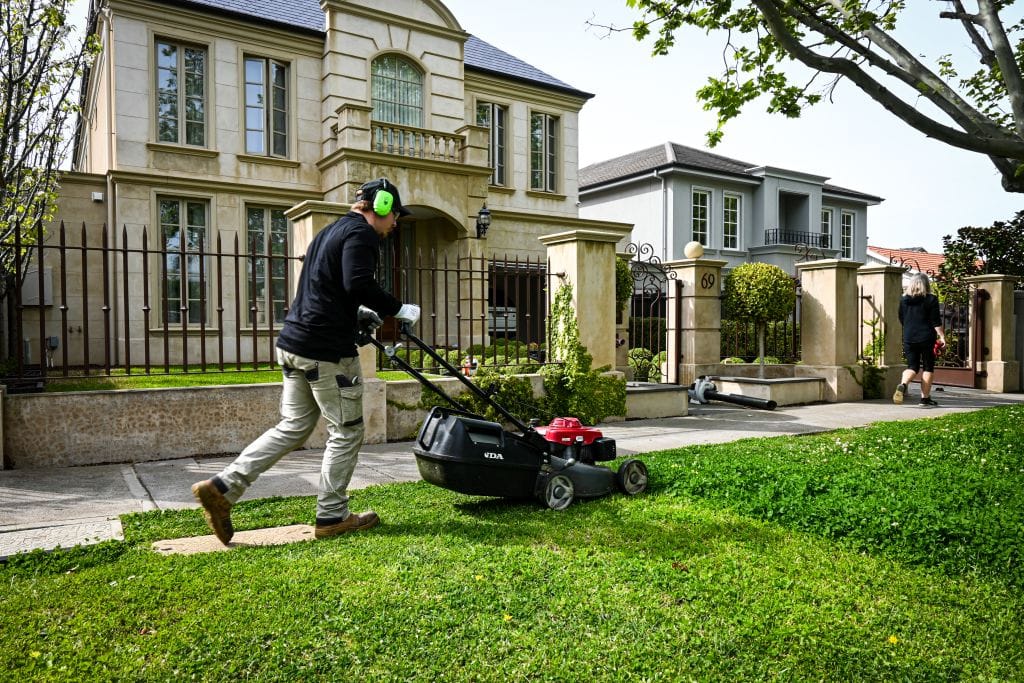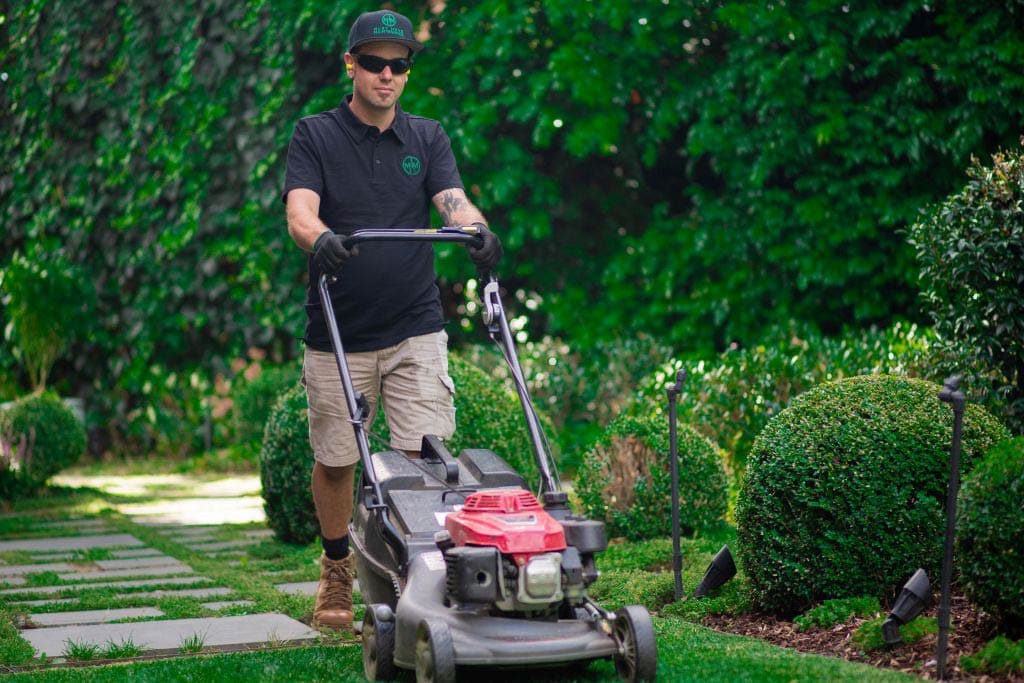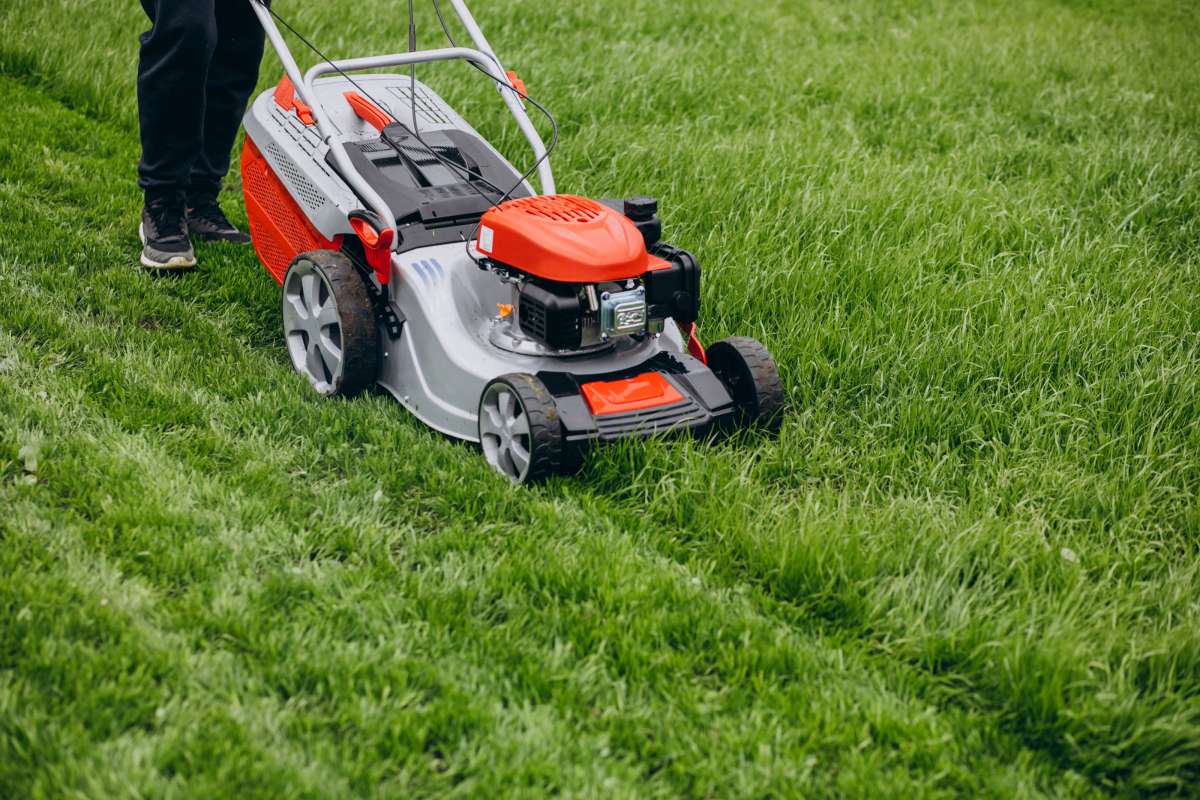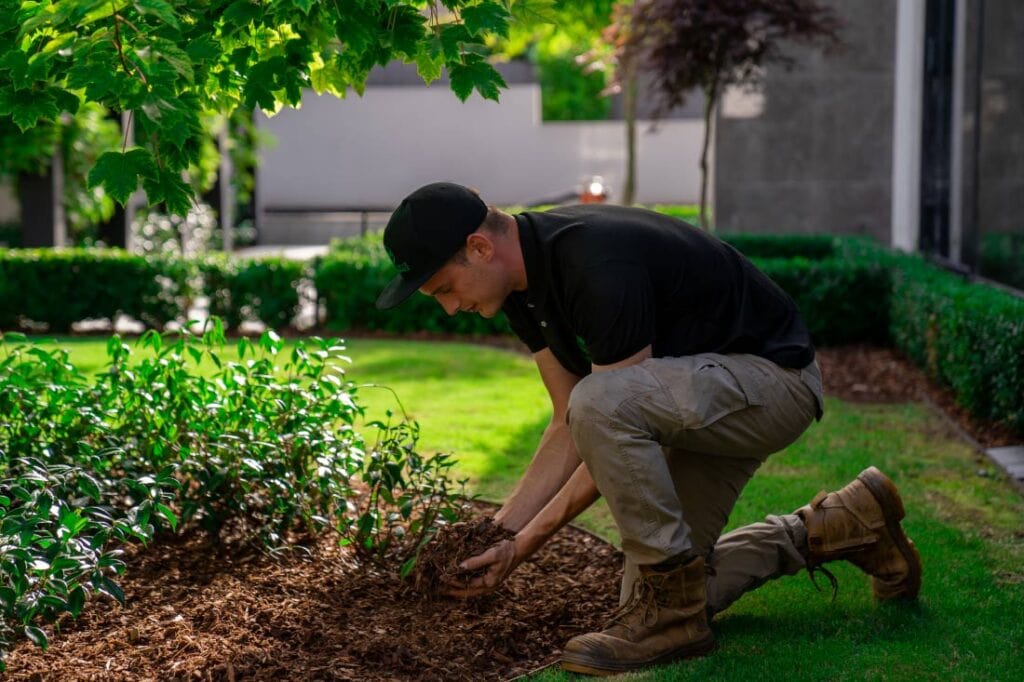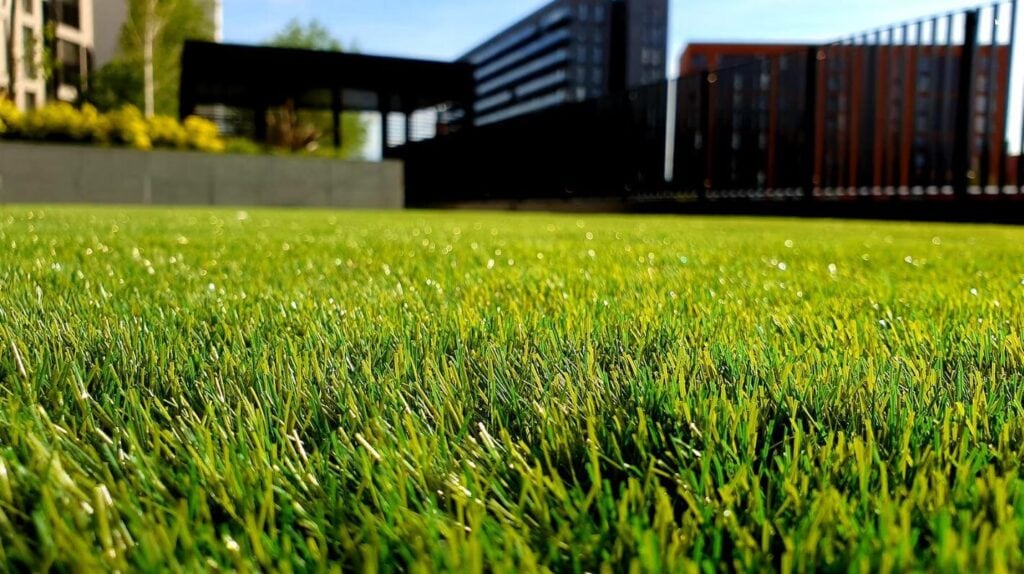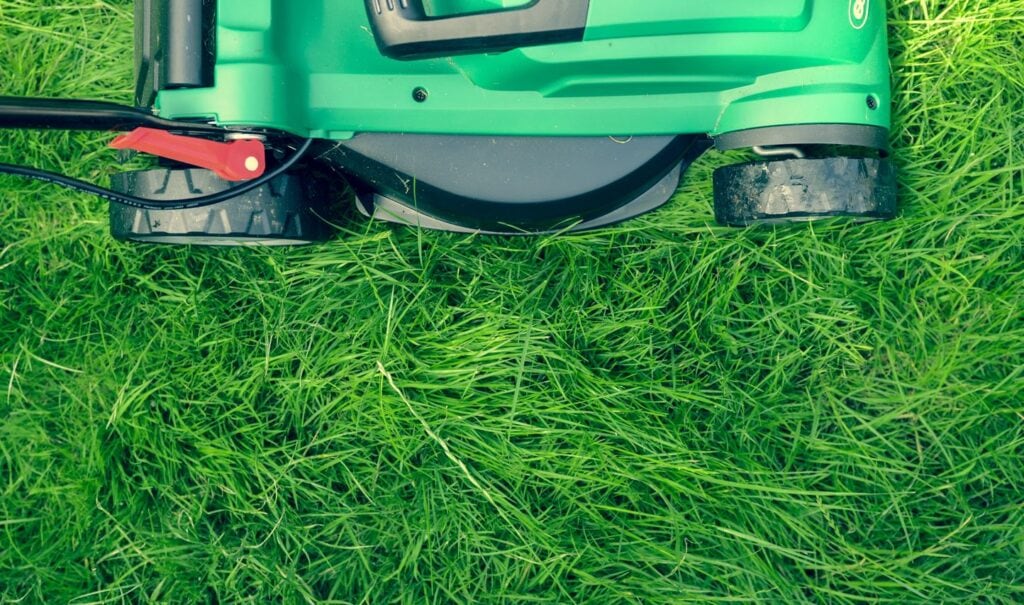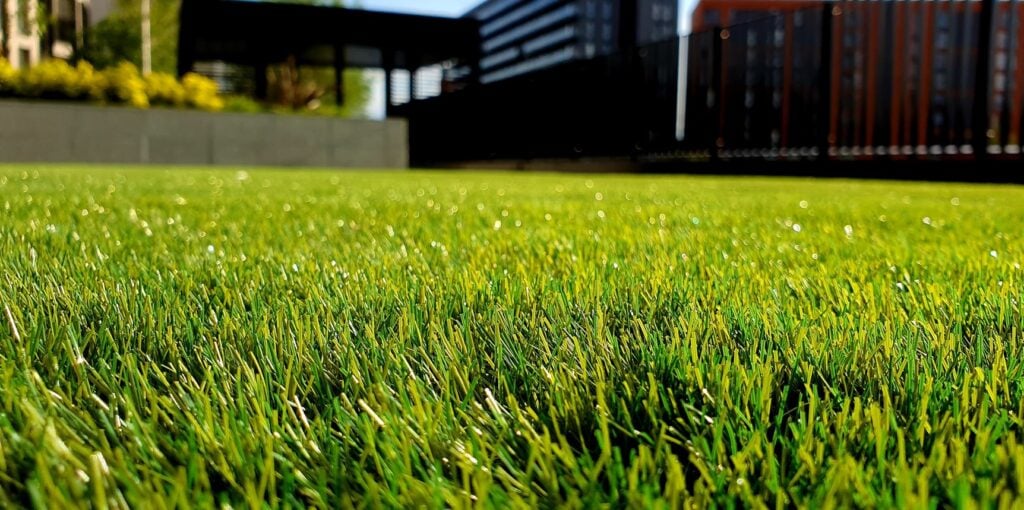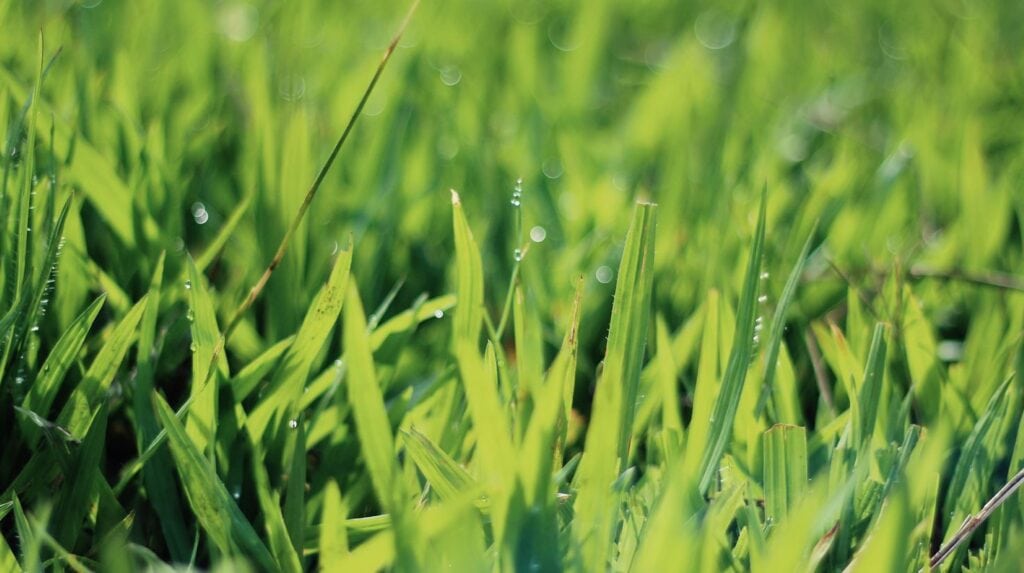It makes no difference what brand of lawn mower you have. Either you have the most recent and expensive model available, or you have one that is a few years old. It's true that you could spend your time doing anything other than mowing, but you wouldn't end up with a beautiful lawn.
If your lawn mower dies after prolonged use, the problem may be less complex than you think.
A warm mower usually means you'll finish the job, but several environmental and mechanical factors could cause your mower to shut down before you're done. Most manuals already include some common solutions, but sometimes it's necessary to look a little closer, taking all necessary safety measures first.
Therefore, let's explore some of the typical causes of your lawn mower not starting after it has been warmed up and some potential solutions.
This blog will help you understand the factors and how to address them. It's important to note that the solutions are ranked in order of how serious the problem is.
The Most Common Causes Of A Hot Lawn Mower Not Starting
Hot engine problems can strike any gardener, regardless of brand or model. Most of the time, no matter how much you try to warm up your engine, it won't start.
You've performed all the standard maintenance on your mower, such as checking the oil level and replacing the oil, air filter, spark plugs, and so on, but the mower still needs to start.
Trying to ignite a gas-powered lawn mower is an ordeal in and of itself. But your tolerance is put to the test when the mower stops working altogether.
Spark Plug Defect
A faulty spark plug is a common cause of a lawn mower's engine not cranking. A narrow space separates the spark plug's two electrodes. It sparks across the chasm and helps the ideal air-gasoline mixture ignite and burn, resulting in propulsion.
If this space is too short, the combustion heat will expand until the mower stops working. Your lawnmower's manual will have specific instructions for how far apart the spark plugs should be placed. Wear and tear on the electrode can also reduce its strength.
Second, when the engine is hot, the accumulation of soot can interfere with spark creation, resulting in an incomplete ignition and a difficult start. Most hot start problems can be traced back to a faulty plug. Spark plugs have their lengths and operating temperatures laid out for them.
First, check with your engine manufacturer to see if they have the correct plug code. Keeping a spare spark plug on hand allows you to quickly restore normal operation by replacing the damaged one. If the spark plug is examined and found to have rough components, the problem is fixed, and time is saved by simply restoring the plug.
Also, a faulty spark plug can't be fixed, so always replace them before each new season.
Engine Overheating
Common causes of an overheated mower include:
- A lean running engine.
- The use of the incorrect plug or gasoline type.
- The obstruction of the air cooling fins.
One of the main causes of your mower not starting is this. There are a few potential causes of engine overheating. Sometimes the engine overheats because dry leaves have accumulated in the muffler.
When these dead leaves pile up in the mower's deck, they eventually make their way to the machine's exhaust system. The same holds for grass, which can produce clippings if unchecked. Particles can then flow into the mower deck and contact the muffler, blocking exhaust and leading to engine overheating.
Grass in a field is too tough for the typical lawn mower. However, when mowing a field with a regular lawn mower, the dry leaves can get stuck in the muffler and cause the engine to overheat. The engine in your mower produces a lot of heat, so its heat dissipation needs to be proportional to that.
Your lawnmower could catch fire if excess heat isn't dissipated properly. As with the mould itself, the cooling fins attached to the engine can get excessively hot if they are too close to the source of the heat. Your lawn mower will start to emit smoke and could catch fire as a result.
Ensuring Safety with Residual Current Devices (RTDs)
In the context of ensuring safety while troubleshooting and maintaining your lawn mower, especially when electrical components are involved, utilising Residual Current Devices (RTDs) can be beneficial. RTDs, also known as Ground Fault Circuit Interrupters (GFCIs), are designed to quickly disconnect power when it detects that the electrical flow is imbalanced, which could lead to a ground fault.
RTDs are particularly useful for preventing electric shock hazards and minimising the risk of electrical fires. When using electrical lawnmowers or even while charging battery-operated mowers, having an RTD in place can provide an extra layer of safety. By cutting off the power supply in case of a fault, these devices can prevent accidents that could result from electrical malfunctions or mishandling.
Therefore, while the focus is often on mechanical issues with lawnmowers, it is prudent also to consider electrical safety measures like using RTDs as part of your regular maintenance and troubleshooting routine.
Plug Wire Failure
The wires in a plug are copper coils wrapped around a solid metal centre. They function as the high voltage travels through them, searching for ground, with the positive voltage reflected by the earth via the plug electrode.
A spark can be produced because of the ideal path to ground provided by the spark plug.
It only took a few milliseconds for this to happen. If the coil voltage has a shorter route to the ground, the mower engine will shut off because power is being cut off at the plug.
As a result, the engine instantly shuts off when the bail lever is released because the coil voltage has found a direct path to the ground.
Also, whether human or artificial, a shortcut is always welcome. The engine will not operate reliably if the coil control wire is rubbed against the ground source.
Plug wires typically fail while the mower is hot because of the high resistance caused by the high-temperature values produced by the combustion process, but they start working again after the engine cools down. Remember that moisture is the number one enemy of plug wires and electrical components, so store your lawnmowers in dry, well-ventilated settings.
Air Leaks
When the engine gets hot, it shuts off, and the most common cause is loose bolts. Air leaks caused by loose fasteners can cause an engine to pull in too much outside air, causing it to forsake the optimal gas-to-air ratio.
As the engine warms up, the remote units expand, and the gaps widen throughout the vehicle. The constant roar of the engine that must eventually die becomes unbearable.
Mower engines frequently die due to loose bolts holding the motor frame and engine components together. Therefore, checking them regularly and tightening them if necessary is important. Make sure all the nuts are securely fastened, especially the ones connecting the air filter to the engine. The bolts holding the lawnmower's frame together should be checked periodically.
Faulty Choke
Choking inside the carburettor is a common problem with electric lawnmowers and can cause expensive repairs. However, when used under these circumstances, the lawnmower's choke will remain closed, preventing the engine from running.
The car's engine is flooded. When an engine is flooded, less heat can escape, leading to overheating and eventual fire. The same thing happens if something goes wrong with the mower's solenoid and the engine overheats.
The engine's choke is set up to open automatically each time it is started.
However, if something goes wrong, the choke won't open and will get stuck on the engine, leading to flooding because not enough air can get into the engine when the choke is closed.
The quickest way to fix this is to take out the air filter and clean it thoroughly.
Overheating automatic chokes are a common source of these issues, though.
If your vehicle has an automated choke, you should repair the carburettor immediately. Choke problems might occur if the carburettor sends excessive fuel to the cylinder or gasket. When the engine is hot, the flood valve opens, and the spark plug prevents the engine from starting.
If you want to know if your choke is working, look at these helpful hints.
- If you have a lawnmower with a primary bulb-type choke and it smokes when you start it, you probably need to clean or replace the carburettor.
- In the case of an automatic choke, the choke lever is unnecessary. In this situation, auto-choke is a necessity. When the engine is hot, you should check the choke plate. If the choke plate is open, the choke is functioning properly. However, if your carburettor has a closed choke plate, it needs to be serviced or replaced.
- When starting a cold engine, the choke must be fully CLOSED.
- When starting a cold engine, the choke plate must always be closed.
- If not, inspect the thermostat choke control unit near the exhaust for any signs of binding or malfunction.
Problematic Compression
Mowers routinely experience the compression issue. Usually, broken valves are to blame. Finding out if your mower has low Compression can be done quickly and easily. If the starter rope for your lawn mower seems easier to pull than before, your engine is probably too hot, which is a symptom of inadequate Compression and too-large valve clearances. Do not attempt to fix a small engine yourself if you lack mechanical knowledge.
Low Oil Level
When the oil level is low, the engine temperature rises slowly, and engine parts like coils and plugs fail to function above their optimal temperature. Due to its role as the primary coolant and lubricant in the engine, oil levels must be kept above a critical threshold before the engine can be started or propelled. Make sure the oil level is checked every time you fill up with gas.
Alternative Starting Issues
There are a few other reasons to do so besides the ones listed here. These, however, only appear occasionally. Because of its low boiling point, alcohol in oil can be a source of trouble. Putting a shim (non-metallic) between the engine and the carburettor will fix the problem.
The wrong fuel mixture is an example of a simple problem that can arise. Possible causes of this lean condition include insufficient fuel or excessive air entering the engine. Raise the ratio of air to fuel slightly.
Using the incorrect fuel can also lead to complications; for example, some engine manufacturers might advise using regular gas rather than an Ethanol blend. Some burn hot enough to render a warranty null and void.
When checking the blade on a mower, many gardeners find it easiest to tip the mower on its side. Having your lawnmower resting at this angle can lead to the same flooding of just one cylinder caused by a clogged choke.
When the engine is flooded with gas, it cannot be restarted. You might be concerned about this, and a minor fix might be in order.
While you check the undercarriage, the gas will flow freely past the valve, so there is no need to worry. You can prevent gas from escaping through the shutoff valve by closing the small fuel tap if necessary. Let the gas run out, and then try to start it again.
Maintenance Tips To Prevent Starting Issues
If your lawn mower is having trouble starting, try these preventative maintenance tips:
Regularly Change The Fuel
Problems getting a vehicle to start are frequently brought on by stale fuel.
To avoid this problem, always use fresh fuel and stay away from the temptation to store it for an extended period. In the event that you still have stale fuel in the tank, you should empty it and replace it with new gasoline.
This will ensure that the quality of the fuel is at its highest possible and improve starting performance.
Check The Spark Plug
Your lawn mower may not start because of a faulty spark plug. The spark plug should be checked frequently and cleaned or replaced if necessary. Always follow the manufacturer's recommended gap size for the spark plug. Ignition and easy starting both require a good, solid spark.
Maintain The Fuel System's Cleanliness
Over time, the gasoline system can get clogged with debris, dirt, and varnish, which makes the vehicle difficult to start. Use a fuel stabiliser or additive to help maintain a germ-free fuel system and avoid this problem. In addition, fuel filters should be used to prevent contamination and engine damage.
Properly Store The Lawn Mower
Storing your lawn mower correctly after the season ends would be best. Fuel degradation can be avoided by draining the tank or using a fuel stabiliser. Remove all debris from the mower and store it in a dry, secure location. Mower components are better preserved, and problems with starting are less likely when properly stored.
Replace Or Clean The Air Filter
The engine may need help starting if the air filter is dirty or clogged. The air filter should be inspected frequently and, if dirty, cleaned. The air filter may need to be changed entirely in some circumstances. Having a clean air filter allows optimal air intake, improving combustion and making the engine easier to start.
Maintain The Battery
Regular battery maintenance is mandatory for electric start lawn mowers. Maintaining clean and secure battery connections should be a routine check. Slow cranking is an indication that the battery needs charging or replacing to prevent starting issues.
Inspect The Carburetor
The carburettor is crucial because it combines the fuel and air needed for combustion.
The carburettor must be checked frequently for wear and tear, obstructions, and incorrect settings. To ensure optimal fuel distribution and starting performance, clean the carburettor as needed or have it serviced by a professional.
Conclusion
A lawn mower's engine may not start due to various environmental and mechanical factors, including faulty spark plugs, engine overheating, and plug wire failure.
Common causes of a hot lawn mower include a lean running engine, incorrect plug or gasoline type, and obstruction of air cooling fins.
A faulty spark plug can cause the engine to overheat, and a lean running engine can cause the engine to overheat due to dry leaves accumulating in the muffler or grass.
Plug wire failure is another common cause of engine overheating, as the wires in a plug are copper coils wrapped around a solid metal center.
If the coil voltage has a shorter route to the ground, the engine shuts off, and the coil control wire is rubbed against the ground source.
Plug wires typically fail while the mower is hot due to high resistance caused by high-temperature values produced by the combustion process.
Air leaks are another common cause of engine shutting off, with loose bolts causing the engine to pull in too much outside air, causing the engine to forsake the optimal gas-to-air ratio.
Loose bolts holding the motor frame and engine components together should be checked regularly and tightened if necessary.
Faulty choke is another common issue with electric lawnmowers, as it can cause expensive repairs.
When used under these circumstances, the lawnmower's choke will remain closed, preventing the engine from running. This can lead to overheating and eventual fire, as well as a flooded engine.
To fix this, remove the air filter and clean it thoroughly. Overheating automatic chokes are common issues in lawn mowers, and repairing the carburettor is essential.
Choke problems can occur when the carburettor sends excessive fuel to the cylinder or gasket, leading to engine overheating and spark plug issues. To check if the choke is functioning properly, check the choke plate when the engine is hot.
If the choke plate is closed, it needs to be serviced or replaced.
When starting a cold engine, the choke must be fully closed. If not, inspect the thermostat choke control unit near the exhaust for any signs of binding or malfunction.
Problematic compression is another issue that lawn mowers often experience, often due to broken valves. To determine if the engine has low compression, check the starter rope for a hot engine. Low oil levels can cause engine temperature to rise slowly, and engine parts like coils and plugs fail to function above their optimal temperature.
Alternative starting issues can arise from alcohol in oil, the wrong fuel mixture, or the wrong fuel mixture.
To prevent these issues, use a non-metallic shim between the engine and carburettor.
Maintenance tips to prevent starting issues include regularly changing the fuel, checking the spark plug, maintaining the fuel system's cleanliness, properly storing the lawn mower, replacing or cleaning the air filter, maintaining the battery, and inspecting the carburettor.
By following these maintenance tips, you can ensure optimal fuel distribution and starting performance in your lawn mower.
Content Summary:
- It makes no difference what brand of lawn mower you have.
- Therefore, let's explore some of the typical causes of your lawn mower not starting after it has been warmed up and some potential solutions.
- Hot engine problems can strike any gardener, regardless of brand or model.
- A faulty spark plug is a common cause of a lawn mower's engine not cranking.
- Most hot start problems can be traced back to a faulty plug.
- First, check with your engine manufacturer to see if they have the correct plug code.
- Keeping a spare spark plug on hand allows you to quickly restore normal operation by replacing the damaged one.
- One of the main causes of your mower not starting is this.
- There are a few potential causes of engine overheating.
- If the coil voltage has a shorter route to the ground, the mower engine will shut off because power is being cut off at the plug.
- As a result, the engine instantly shuts off when the bail lever is released because the coil voltage has found a direct path to the ground.
- The engine will not operate reliably if the coil control wire is rubbed against the ground source.
- Remember that moisture is the number one enemy of plug wires and electrical components, so store your lawnmowers in dry, well-ventilated settings.
- Air Leaks When the engine gets hot, it shuts off, and the most common cause is loose bolts.
- Mower engines frequently die due to loose bolts holding the motor frame and engine components together.
- Make sure all the nuts are securely fastened, especially the ones connecting the air filter to the engine.
- The bolts holding the lawnmower's frame together should be checked periodically.
- The same thing happens if something goes wrong with the mower's solenoid and the engine overheats.
- If your vehicle has an automated choke, you should repair the carburettor immediately.
- In the case of an automatic choke, the choke lever is unnecessary.
- When the engine is hot, you should check the choke plate.
- If the choke plate is open, the choke is functioning properly.
- However, if your carburettor has a closed choke plate, it needs to be serviced or replaced.
- Finding out if your mower has low compression can be done quickly and easily.
- The wrong fuel mixture is an example of a simple problem that can arise.
- Raise the ratio of air to fuel slightly.
- When checking the blade on a mower, many gardeners find it easiest to tip the mower on its side.
- When the engine is flooded with gas, it cannot be restarted.
- The Fuel Problems getting a vehicle to start are frequently brought on by stale fuel.
- This will ensure that the quality of the fuel is at its highest possible and improve starting performance.
- Your lawn mower may not start because of a faulty spark plug.
- Always follow the manufacturer's recommended gap size for the spark plug.
- Use a fuel stabiliser or additive to help maintain a germ-free fuel system and avoid this problem.
- Storing your lawn mower correctly after the season ends would be best.
- The engine may need help starting if the air filter is dirty or clogged.
- Having a clean air filter allows optimal air intake, improving combustion and making the engine easier to start.
- Regular battery maintenance is mandatory for electric start lawn mowers.
Frequently Asked Questions ABOUT Lawn Mowing
Depending on your knowledge and experience with lawn mower repairs, you can fix some ignition system problems yourself. A homeowner can often do simple tasks like cleaning or replacing the spark plug or ignition coil. However, it's recommended to seek professional assistance from a qualified technician for complex issues.
To maintain optimal fuel quality and prevent starting problems, changing the fuel in your lawn mower every 30 to 60 days is recommended. This helps prevent fuel deterioration and the accumulation of impurities that can affect starting and overall engine performance.
While homeowners can perform some basic maintenance tasks, it's advisable to have periodic professional maintenance for your lawn mower. Professionals have the expertise to identify and address potential issues, ensuring your mower remains in optimal condition and minimizing the chances of starting problems.
If your lawn mower requires starting fluid but has difficulty starting without it, it could indicate problems with the fuel delivery system. Possible causes include a clogged carburettor, a faulty fuel pump, or issues with the fuel line. It's best to have a professional inspect and diagnose the issue for proper resolution.
If your lawnmower has an electric start system and a dead battery, you can try jump-starting it using a battery charger or another power source. Alternatively, you can replace the battery with a fully charged one. It's important to ensure proper battery maintenance to avoid starting issues related to battery failure.

